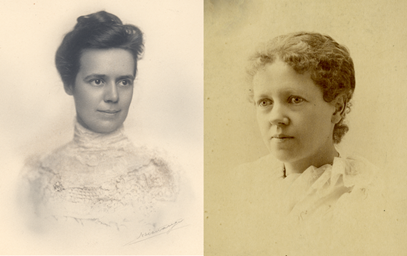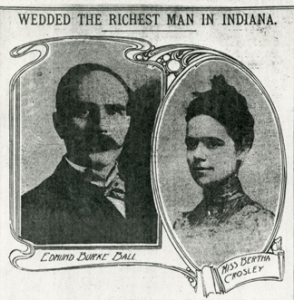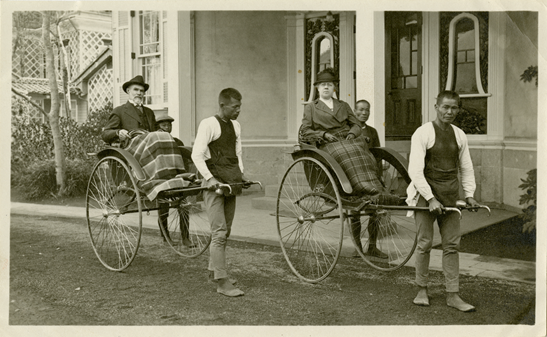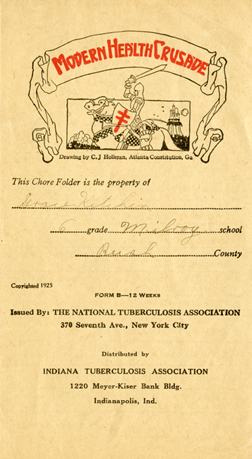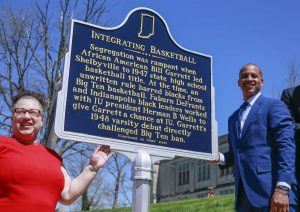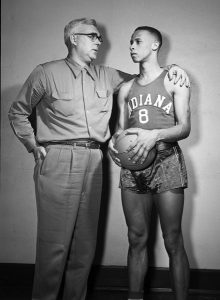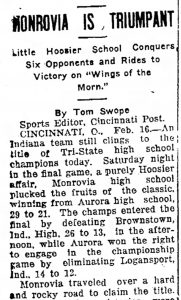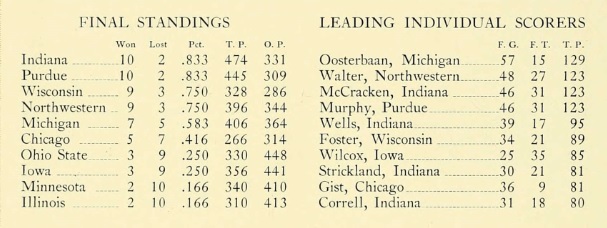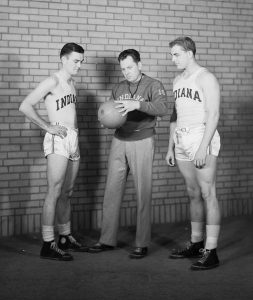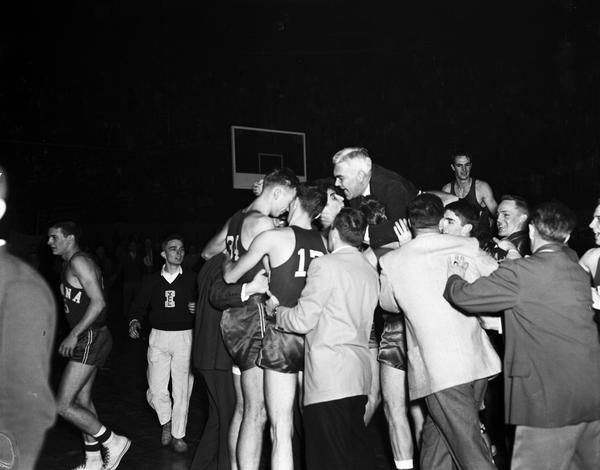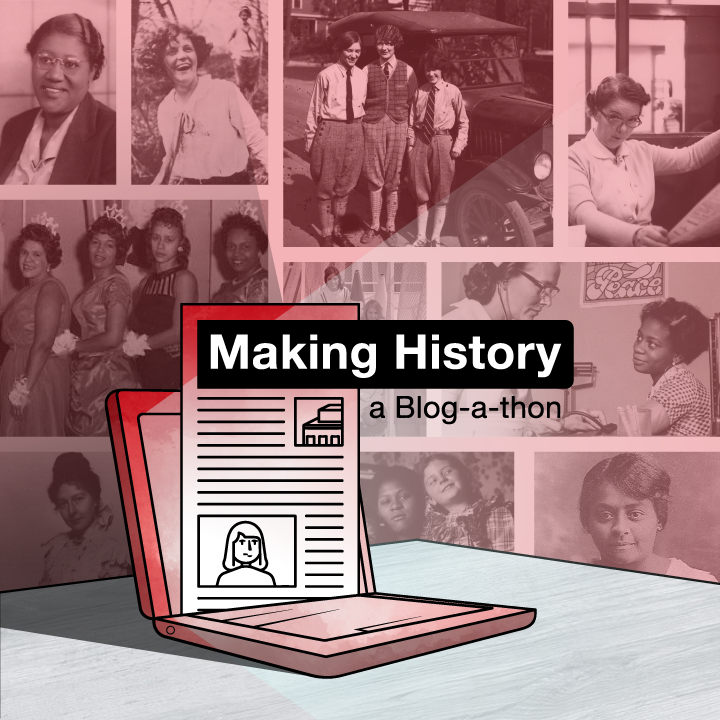
Last week, IHB staff joined Ball State University faculty and students for the Making History Blog-a-Thon, hosted by the Delaware County Historical Society and the Ball State University Library. The event encouraged researchers to bring to life the stories of notable women from Muncie and Delaware County. Not only was it a fun and productive day, but an active, hands-on way to celebrate Women’s History Month. So, we wanted to share a little more here about the event, as well as the story of one bold Muncie women whom I had the pleasure of researching at BSU. Her story is below the event description.
“Making History” Blog-a-Thon
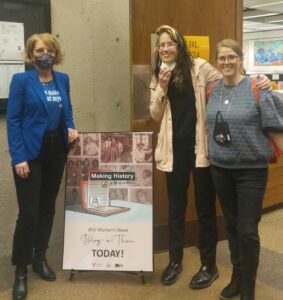
When my colleague Nicole Poletika and I arrived at the lively GIS Research and Map Collection room at Bracken Library, several Ball State students and professors were already at work. The collection supervisor Melissa Gentry, who we admiringly refer to as the “map queen” for her incredible mapping and imaging skills, helped us select a “notable woman of Muncie and Delaware County” to research. We were challenged not to just collect facts, but to tell a story. We had limited time (just over an hour) and space (entries were to be less than a typed page), but we were determined to try to bring some color to the story of at least one Muncie woman. Thanks to the extensive advance research undertaken by the organizers, we had information on scores of women that helped us choose someone who piqued our interest. I was drawn immediately to the story of a young aviator named Marjorie Kitselman, who defied convention to forge her own path.
All of the posts created for the Blog-a-Thon, including some written in the form of obituaries and even imagined diary entries, will eventually be posted on the Notable Women of Muncie and Delaware County website. Organizers will also begin posting the submissions on their Instagram account (@themuncienotables) starting on April 6. Make sure to follow them, as they hope to announce an upcoming virtual Blog-a-Thon soon. Until then, learn more about notable woman, Marjorie Kitselman.
Aviator Marjorie Kitselman on Her Own Terms
Marjorie Kitselman became a local celebrity practically from a birth, enthralling the Muncie press with her every move. She was born to Leslie Curtis Kitselman, an author and philanthropist, and Alva L. Kitselman, a wealthy industrialist. The family lived in a large home and estate known as “Hazelwood,” now a National Register site.
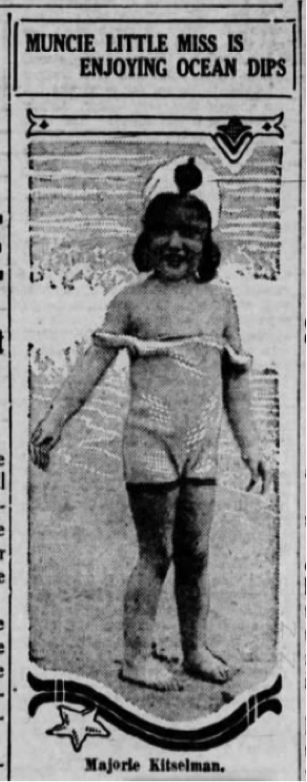
Kitselman was front page news at the age of two. The Muncie Evening Press printed a picture of her on vacation with her family, calling her the “society belle of the ‘younger set.’” As she grew up among the elite of Muncie and Indianapolis, where she attended Tudor Hall, the papers reported on her participation in school plays, attendance at parties, visits to friends, and vacations. The press continuously commented on her appearance, referring to a 16-year-old Marjorie as the “attractive young daughter of Mr. and Mrs. A. L. Kitselnman.” Even as a teenager she was a public figure.
When Kitselman came of age in the 1930s, a rather austere and Victorian set of expectations of decorum for women reemerged. After the increased freedoms many women found during the 1920s, the 1930s saw a partial return to domesticity and homemaking as ideals. For Kitselman, these social rules were applied to everything from the people she associated with, to how she presented herself in public, to which philanthropic causes she supported. A search of Muncie newspapers shows that everything about her was up for discussion and judgement. She must have known that she was under scrutiny from the press and Muncie society, but she seems to have made up her own mind about what was important to her.
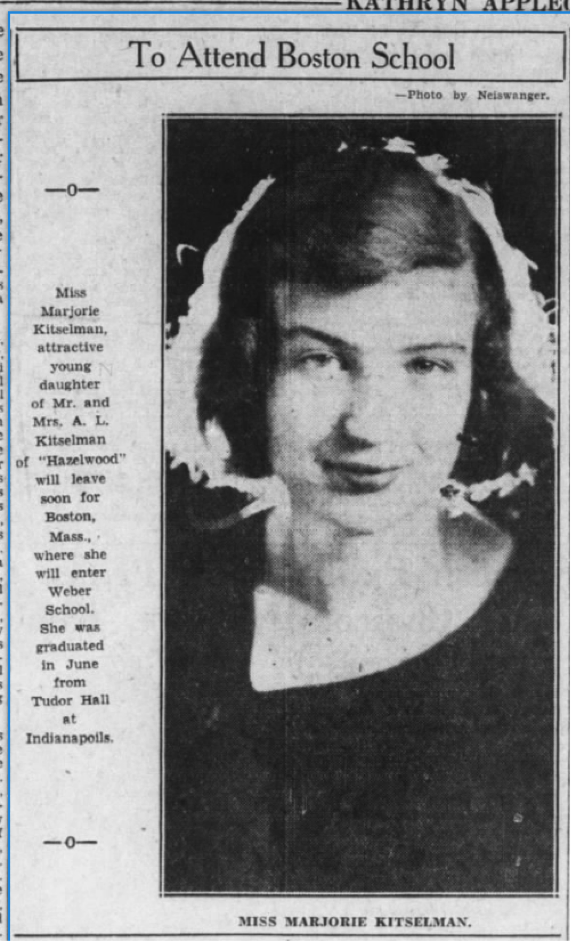
In September 1932, sixteen-year-old Marjorie Kitselman earned her pilot’s license at the Muncie airport. The Muncie Star Press reported that this accomplishment made her “the youngest pilot in the state.” The reporter explained:
Miss Kitselman was required to make several ordinary landings, a deadstick landing, do a spiral from a height of three thousand feet, make figure 8’s and other flight requirements in addition to taking a written examination on air traffic rules and regulation.
The deadstick landing was an especially death-defying stunt. In this practice for an aircraft malfunction, the engines are turned off and the pilot attempts to glide into the landing. It was not for the faint of heart. She continued to fly throughout the 1930s, sometimes visiting the Muncie airfield where she earned her license “to see the boys and prove that she hasn’t forgotten all she learned as a student here.”
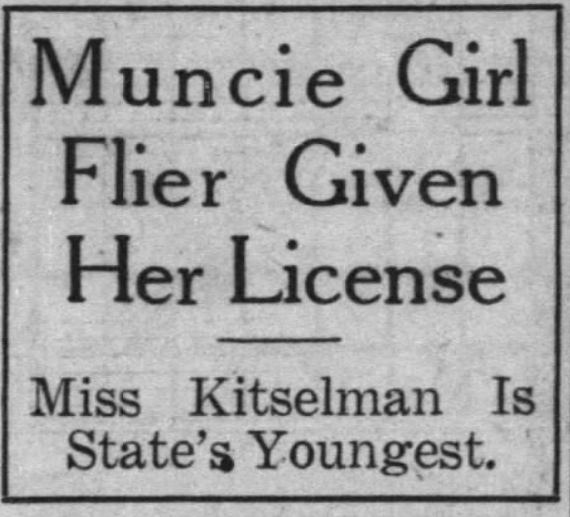
Kitselman continued to live on her own terms, surprising the public by marrying an Olympic athlete and later a famous aviator. She finished school, traveled, stayed close with her family, and eventually died in Curnavaca, Mexico in 1953 after a very short illness. She was gone much too young, at the age of 37, but she lived a full life on her own terms, leaving the expectations assigned to her far beneath her flight path.
More Women’s History! Hoosier Women At Play Conference
Join us for the next exciting women’s history event: the Hoosier Women at Play 2022 women’s history conference. This year’s event is a week-long series of lunch and learn talks Monday, April 18 – Friday, April 22, 2022.

Women’s activities have been undervalued throughout history by patriarchal economic, political, and social systems. Women’s play, pleasure, and creativity have even been treated as dangerous and devious, challenging demands that women’s worth was defined only through their roles as wives and mothers or later as (still undervalued) workers in the capitalist marketplace. This conference challenges presenters to explore women’s play and what it means for individual and collective happiness, health, liberation, and value.
This year’s conference features two keynote speakers.

Dr. Tony Jean Dickerson will speak on the significance of quilting in Black history throughout the African Diaspora and on her motivations and experience in founding the Central Indiana Akoma Ntsoso Modern Quilt Guild, which she serves as president. She will also address the importance of this art, traditionally upheld and passed on by women, in linking the younger generations to the past and, from the Akan (West Africa) name Akoma Ntoso, linking “hearts and understanding.”

Dr. Michella Marino will be presenting her personal experience as well as the extensive research she conducted for her new book Roller Derby: The History of An American Sport (published in October 2021, University of Texas Press). She will speak to the unique gender relations and politics of roller derby, which historically centered women athletes, while struggling to be accepted as a mainstream sport. Dr. Marino will shine a feminist light on how participants used roller derby to navigate the male-dominated world of sports along with their identities as athletes, mothers, and women at play.
Learn more about and register for the Hoosier Women at Work Conference here.


